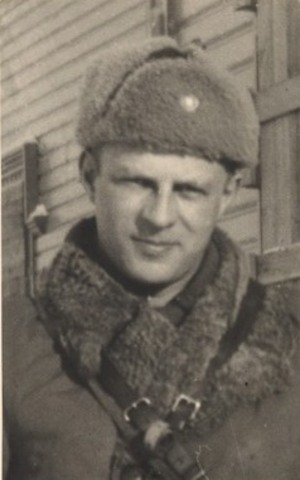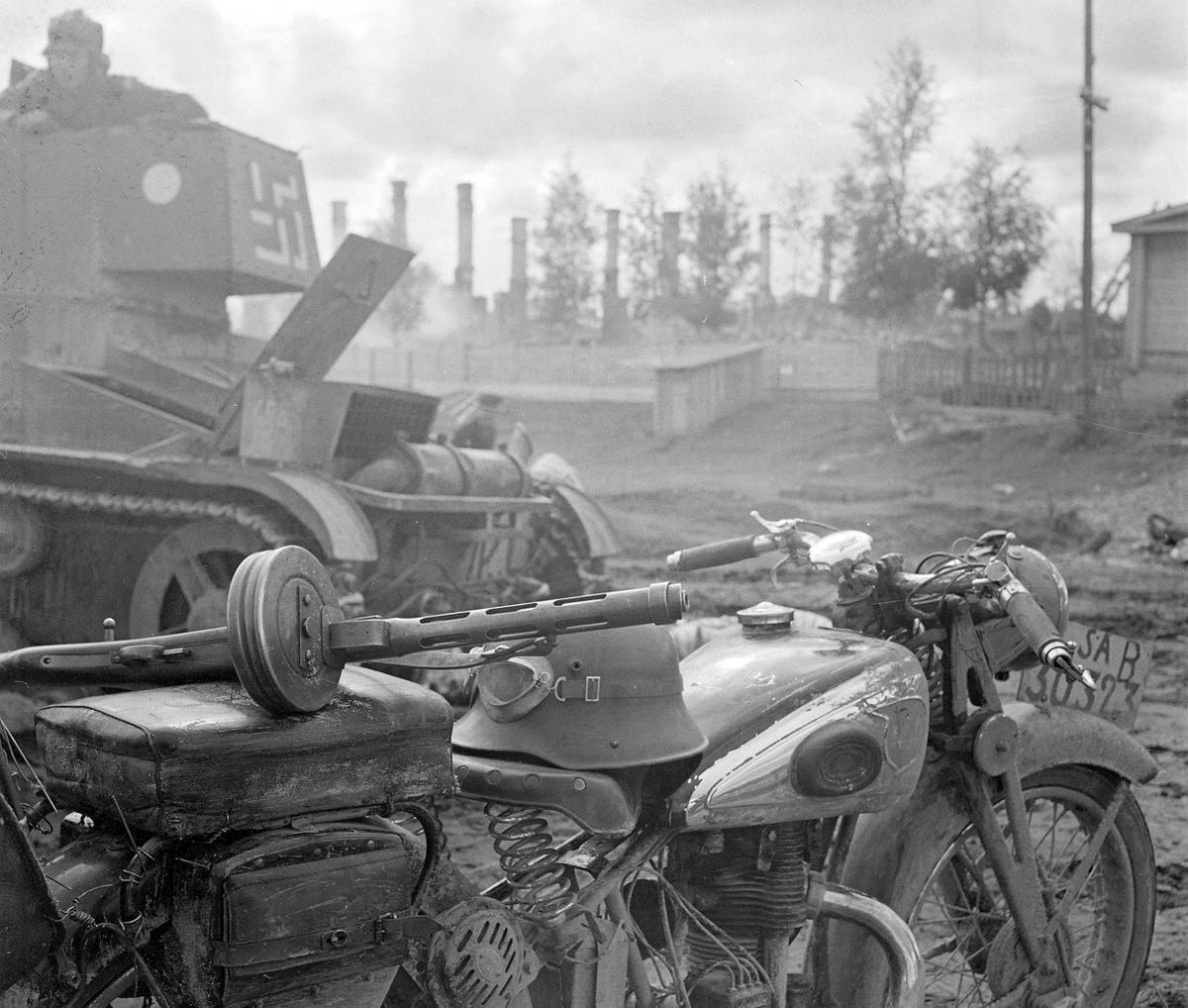In Sweden, Jews were allowed to reside in a few towns—all of them outside the territory that is now modern-day Finland. In 1809 Finland became part of the Russian Empire, as an autonomous Grand Duchy, but Swedish laws remained in force, meaning Jews were still unable to settle in Finnish territory.
Despite the legal difficulties, during the period of Finnish autonomy (1809–1917) Russian Jews established themselves in Finland as tradesmen and craftsmen. As Jews were in principle prohibited from dwelling in Finland, almost all these Jews were retired soldiers from the Imperial Russian army. Being cantonists, forced into the Russian army in childhood, they were required to serve at least 25 years.
After their term expired, they had, however, the right to remain in Finland regardless of the Finnish ban on Jewish settlement, a right forcefully defended by the Russian military authorities. It was only after Finland declared its independence, in 1917, that Jews were granted full rights as Finnish citizens.
----------------
Finland's involvement in World War II began during the Winter War (30 November 1939 - 13 March 1940), the Soviet Union's invasion of Finland prior to Operation Barbarossa, (launched in June, 1941). A total of 204 Finnish Jews fought in the Finnish Army during the Winter War, of whom 27 were killed.
Finnish Jews were among those made refugees from the ceded territories. Finnish national anger at the outcome of that war led to Finland's involvement in the Continuation War (1941–1944). While Germany launched Barbarossa, Finland simultaneously resumed hostilities against the Soviet Union.

This resulted in Finland fighting alongside Nazi Germany. Approximately 300 Finnish Jews fought in the Continuation War, and eight were killed in action. Some Finnish Jews who were fluent in German served in Finnish intelligence. As Finland's forces had substantial numbers of German forces supporting their operations, the Finnish front had a field synagogue operating in the presence of Nazi troops.
Jewish soldiers were granted leave on Saturdays and Jewish holidays. In addition, the most popular Finnish singer of the time, Sissy Wein, was Jewish. She entertained Finnish troops during the war, and became known as the "soldier's sweetheart" or the Finnish Vera Lynn. She refused to sing for German soldiers. Finnish Jewish soldiers later participated in the Lapland War against Germany.

Leo Skurnik, a Jewish medical officer (second row, second from right), was awarded an Iron Cross.
-----------

Tampella 120 mm / Tampella = Tampere's cotton industry

In November 1942, eight Jewish Austrian refugees (along with 19 other deportees) were deported to Nazi Germany after the head of the Finnish police agreed to turn them over. Seven of the Jews were murdered immediately. Finnish Prime Minister Paavo Lipponen issued an official apology over the matter in 2000. According to author Martin Gilbert, these eight were Georg Kollman; Frans Olof Kollman; Frans Kollman's mother; Hans Eduard Szubilski; Henrich Huppert; Kurt Huppert; Hans Robert Martin Korn, who had been a volunteer in the Winter War; and an unknown individual.
When Finnish media reported the news, it caused a national scandal, and ministers resigned in protest. After protests by Lutheran ministers, the Archbishop, and the Social Democratic Party, no more foreign Jewish refugees were deported from Finland. Approximately 500 Jewish refugees arrived in Finland during World War II, although about 350 moved on to other countries, including about 160 who were transferred to neutral Sweden to save their lives on the direct orders of Marshal Carl Gustaf Emil Mannerheim, the commander of the Finnish Army.
About 40 of the remaining Jewish refugees were sent to do compulsory labor service in Salla in Lapland in March 1942. The refugees were moved to Kemijärvi in June and eventually to Suursaari Island in the Gulf of Finland. Although Heinrich Himmler twice visited Finland to try to persuade the authorities to hand over the Jewish population, he was unsuccessful.
In 1942, an exchange of Soviet POWs took place between Finland and Germany. Approximately 2,600–2,800 Soviet prisoners of war of various nationalities then held by Finland were exchanged for 2,100 Soviet POWs of Finnic nationalities (Finnish, Karelian, Ingrian, or Estonian) held by Germany, who might have volunteered in the Finnish army. About 2000 of the POWs handed over by Finland joined the Wehrmacht.
Among the rest there were about 500 people (mainly Soviet political officers) who were considered politically dangerous in Finland. This latter group most likely perished in concentration camps or were executed as per the Commissar Order. Based on a list of names, there were 47 Jews among the extradited, although they were not extradited based on religion.
----------------

In winter war
---------------------
 Later in the war, Germany's ambassador to Helsinki Wipert von Blücher concluded in a report to Hitler that Finns would not endanger their citizens of Jewish origin in any situation. According to historian Henrik Meinander, this was realistically accepted by Hitler. Yad Vashem records that 22 Finnish Jews died in the Holocaust, when all died fighting for the Finnish Army.
Later in the war, Germany's ambassador to Helsinki Wipert von Blücher concluded in a report to Hitler that Finns would not endanger their citizens of Jewish origin in any situation. According to historian Henrik Meinander, this was realistically accepted by Hitler. Yad Vashem records that 22 Finnish Jews died in the Holocaust, when all died fighting for the Finnish Army.Three Finnish Jews were offered the Iron Cross for their wartime service: Leo Skurnik, Salomon Klass, and Dina Poljakoff. Major Leo Skurnik, a district medical officer in the Finnish Army, organized an evacuation of a German field hospital when it came under Soviet shelling. More than 600 patients, including SS soldiers, were evacuated.
---
Finnish Jewish Major Leo Skurnik (1907-1976). Scientist, doctor, and aspiring concert pianist, Leo Skurnik joined the Finnish Army as a medical officers
---
Captain Salomon Klass, also of the Finnish Army, who had lost an eye in the Winter War, led a Finnish unit that rescued a German company that had been surrounded by the Soviets. Dina Poljakoff, a member of Lotta Svärd, the Finnish women's auxiliary service, was a nursing assistant who helped tend to German wounded, and came to be greatly admired by her patients. All three refused the award.

75 mm fied gannon


20 mm at gun firing to neighbor

20 mm Madsen aa-gun
-----------
During the Israeli War of Independence in 1948, about 28 Finnish Jews, mostly Finnish Army veterans, fought for the State of Israel. After Israel's establishment, Finland had a high rate of immigration to Israel (known as "aliyah"), which depleted Finland's Jewish community. The community was somewhat revitalized when some Soviet Jews immigrated to Finland following the collapse of the Soviet Union.
The number of Jews in Finland in 2010 was approximately 1,500, of whom 1,200 lived in Helsinki, about 200 in Turku, and about 50 in Tampere. The Jews are well integrated into Finnish society and are represented in nearly all sectors. Most Finnish Jews are corporate employees or self-employed professionals.
Most Finnish Jews speak Finnish or Swedish as their mother tongue. Yiddish, German, Russian, and Hebrew are also spoken in the community. The Jews, like Finland's other traditional minorities as well as immigrant groups, are represented on the Advisory Board for Ethnic Relations (ETNO).
There are two synagogues: one in Helsinki and one in Turku. Helsinki also has a Jewish day school, which serves about 110 students (many of them the children of Israelis working in Finland); and a Chabad Lubavitch rabbi is based there.
----
In 2006, an exhibition on the history of Finland's Jews from the 1830s to the 1970s opened at Beth Hatefutsoth in Tel Aviv.
----
Military ties
IMI Galil is said to have been partially based on Finnish Rk 62 assault rifle, and indeed the machinery used to manufacture the first Galils as well as receivers for the early samples were provided by Valmet.
Tampella (through fully owned subsidiary Salgad) and Israeli Solel Boneh founded Soltam Systems in 1950 and started to license build Finnish designed artillery pieces and grenade launchers in Israel. It was seen as a win-win for two small and relatively poor countries with nascent defence.
When two decades passed the two countries' profiles had grown apart. Amid negative publicity and dwindling domestic sales for Tampella, the ties between Salgad and Soltam were severed 15. August 1974.
-----------
The foundation for bilateral relations between Finland and Israel was laid before the establishment of the State of Israel. Finnish President Paasikivi announced de facto recognition of Israel on 11 June 1948, a month after Israel's declaration of independence. Finland officially recognized the State of Israel on March 18, 1949 and diplomatic relations were established on November 14, 1950. Finland opened its embassy in Tel Aviv in 1952 and Israel opened its embassy in Helsinki in 1956.
The first Finnish diplomatic representative to Israel was Toivo Kala (= Hope Fish), who presented his letter of accreditation to Foreign Minister Moshe Sharett. Sharett told Kala that he admired Finland's readiness to defend its rights and its efforts to rebuild after the war.
Today, Finland and Israel have strong cultural and scientific ties, and some 10,000 Finns visit Israel every year.
In 2005, Finnish exports to Israel totaled 155.24 million euros and imports from Israel to Finland totaled 95.96 million euros. Israel imports Finnish machinery, telecommunications equipment, wood, paper products and chemical industry products. Israel's leading exports to Finland are telecommunications equipment and machinery, and Israeli fruits and vegetables.
In 2004, a joint Finland-Israel Technology (FIT) cooperation program was created for research and development projects in the field of ICT. The Office of the Chief Scientist in Israel and Tekes, the Finnish Funding Agency for Research and Innovation, allocated five million euros each for the funding of projects.
The Finland Israel Trade association serves as an intermediary between Finnish and Israeli companies in order to create new business contacts. It helps to organize business missions to Israel and hosts business missions from Israel.
-----------
The FDF's LV141 and LV241 -radios have been contract-built by Tadiran for Danish Terma A/S. Spike anti-tank missiles were bought from German Rheinmetall, which subcontracted Rafael Advanced Defense Systems. Rafael was also involved in FDF's LITENING AT -targeting pod purchase. Mastsystem International, current Cobham Mast Systems have been granted an export license to export some telescopic masts from Finland to Israel.
The process to receive export licenses to Israel has been criticized as politically unpredictable, enough for customers to lose interest. For example, a Mastsystem International spokesperson noted in October 2010 that they were denied permit from the end of 2008 to summer 2009. In the same newspaper article a researcher noted that in 2008 Finland had also denied some export permits to Sri Lanka, Brazil and Russia.
.In April 2012 the FDF ordered for the Army 24 million euros worth of Orbiter II UAVs from Aeronautics Defense Systems. Their previous Swiss UAV RUAG Ranger's design was also done in Israel. In January 2014, the FDF ordered $47 million worth of multi-spectral camouflage technology from Fibrotex Technologies.
Ei kommentteja:
Lähetä kommentti
Any explosive ammunition or empty cores, you can put in this.